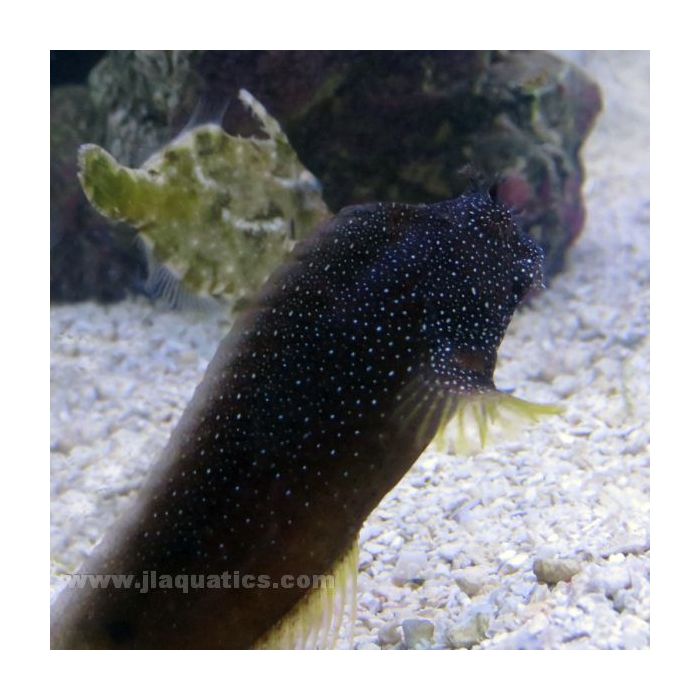Starry Blenny (Asia Pacific)
Blennies are diminutive fish typically with elongated bodies, and as such we do not recommend any aggressive or large-mouthed fish to be kept with them; this includes all groupers, snappers, sweetlips, soapfish, lionfish, eels, goatfish, anglers/frogfish, leaf fish, and any other fish who may eat them.
The Starry blenny is a popular fish both for its appearance and its usefulness. Its other common name is the Snowflake blenny. When sitting still its dark brownish body camouflages into the rockwork, but upon closer inspection its scales are littered with many tiny bright glittering spots, giving it the appearance of a sea of stars in a dark sky. Its fins may be yellowish, and above its eyes are fuzzy eyebrows which give it a fun and unique look. It is very similar to the Lawnmower blenny, but with a darker color overall. Males and females are nearly identical; the only difference being the larger spines on the male�s anal fin. It grows up to 5.5 inches.
The Starry blenny spends most of its time perched on rocks, always alert and watching its environment. It uses its large lips to rasp away at the rock work, eating detritus and algae. It may also clean algae from the glass, leaving 'kiss marks'. It is typically reef safe; however it may pick on SPS coral polyps or clam mantels. This does not normally damage large, healthy coral colonies; however if small or weak colonies or frags are present they may become damaged.
Diet should include plenty of marine algae and Spirulina, frozen Mysis shrimp, and other high quality meaty items. It is preferable to feed more than once a day. We recommend a mature aquarium of at least 50 gallons or larger. Live algae is an important source of food, and should be growing in the aquarium before the blenny is introduced. Algae grazing blennies may be especially aggressive towards similar species, and are best kept one per tank unless a pair can be obtained.
















